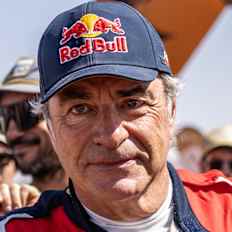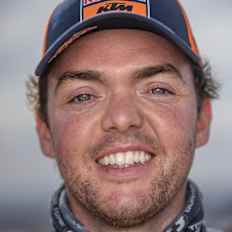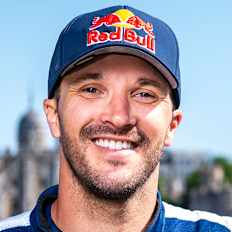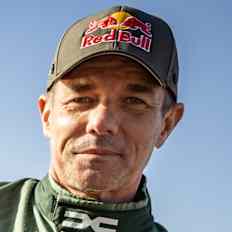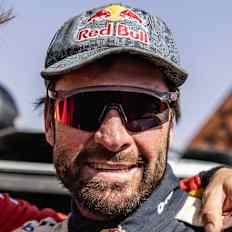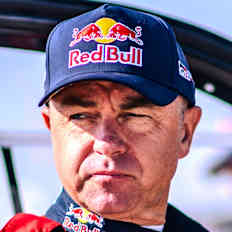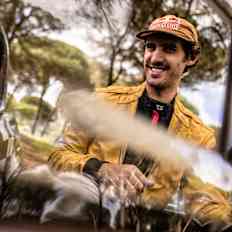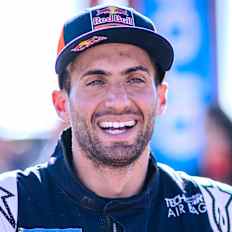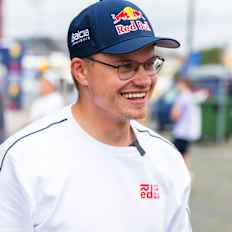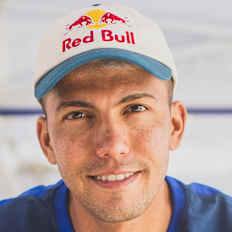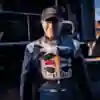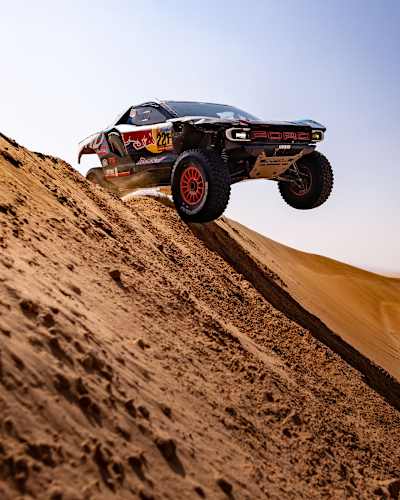
Rally Raid
Everything you need to know about the 2026 Dakar Rally
The Dakar Rally returns with twists and turns, plus plenty of surprises during for its two-week odyssey over the sands of Saudi Arabia. Find out more about motorsport's toughest test of endurance.
In the world of motorsports, each New Year brings with it the roar of engines on the start line of planet's toughest motor race – the Dakar Rally. For nearly 50 years, the biggest rally-raid on the calendar, has kicked-off in early January – first in the deserts of north Africa, then the wilds of South America and now in the vast sands of Saudi Arabia.
The 48th edition of the two-week desert odyssey takes an intrepid convoy of rally racers across dunes, mountains and dry riverbeds. The 2026 Dakar Rally starts and finishes in Yanbu, running from January 3-17. Innovations such as the brand-new Marathon-Refuge Stages are set to push the limits of a race that's already world renowned for it's physical, mental and mechanical toughness. Get into gear for this 8,000km racing adventure with our guide to the latest running of the always gruelling Dakar Rally.
01
Dakar: Race Against the Desert documentary
Universal Pictures, Red Bull Studios and The Red Ceiling Production have joined forces to create Dakar: Race Against the Desert, a new documentary directed by Jalil Lespert that offers an in-depth look at the 2024 Dakar Rally. The film follows key figures in the race, including Nasser Al-Attiyah, who aims for a third consecutive victory, his Prodrive team-mate Sébastien Loeb and Carlos Sainz, who ultimately claimed the win. Through on-the-ground footage and behind-the-scenes access, the documentary captures the physical and mental demands of the rally across unforgiving terrain.
It will be available to rent and purchase starting May 12 on all major streaming platforms.
02
What is the Dakar Rally?
The Dakar Rally is an endurance rally going cross-country in all-terrain vehicles. Part adventure, part long-distance race, the Dakar works by competitors driving on public roads to the start of each day’s timed special stage. Once on the stage they must then follow an off-road course through waypoints to the finish line. The competitors have to be quick, versatile and super-fit. They drive their vehicles distances of up to 1,000km per day over punishingly rough ground where punctures and breakdowns are extremely common. Solid mechanical knowledge is a big advantage at the Dakar and a tool kit is essential.
The racers must be able to scan the track in front of them for obstacles while travelling at speeds of up to 170kph. The rally takes the convoy across a variety of terrains, from sand dunes to rocky valleys, mountains and even marshes. Plus, competitors must navigate from checkpoint to checkpoint using a GPS and their roadbook or else risk losing time and facing penalties. However, maybe getting lost is all part of the fun!
03
Where is the 2026 Dakar Rally taking place?
The 2026 Dakar Rally will be the sixth consecutive edition of the world's toughest race to be hosted by the Kingdom of Saudi Arabia. The first Dakar held in Saudi Arabia was in 2020 and since then the event has been going from strength-to-strength in the Middle Eastern nation. As well as exploring the vast deserts of Saudi Arabia, such as the Empty Quarter, previous rally routes have taken in cultural landmarks such as AlUla, Ha’il, Jeddah and Neom
04
What is the route of the 2026 Dakar Rally?
The world’s most adventurous petrolheads will start their 2026 at the Dakar Rally’s Start Camp in Yanbu. Following shakedown tests and scrutineering, the rally begins with a 30km Prologue Stage on Saturday, January 3. The following day brings Stage 1, which will also start and finish in Yanbu. Stage 2 sees the convoy depart Yanbu and tackle a desert odyssey over the sands of Saudi Arabia.
A total of 14 days of action will take competitors and their machines on a journey of 8,000 kilometres, featuring a massive 5,000km of racing against the clock. At the midway point of the rally there will be a Rest Day in Saudi Arabia's capital city Riyadh. The finish line will finally be found back in Yanbu on Saturday, January 17 at the conclusion of Stage 13. Every single competitor completing the course will be worthy of their place at the final podium presentation ceremony. You can discover the full details of the 2026 route here.
05
What’s new at the 2026 Dakar Rally?
The Dakar Rally has been pushing the boundaries of endurance racing for nearly half a century and innovation is at the forefront of the 48th edition of the desert classic. A delicate blend has been cooked up that keeps things fresh for both competitors and spectators while paying due respect to the indefatigable spirit of rally-raid.
In 2026 two Marathon-Refuge Stages will see competitors fend for themselves
© Kin Marcin/Red Bull Content Pool
The 2026 Dakar will feature a pair of two-day Marathon-Refuge Stages, one in each week of the race. These stages take the place of both the Marathon and 48-hour Chrono stages. Each Marathon-Refuge Stage will strip things back to the bare essentials with only competitor-to-competitor assistance allowed. The convoy will fend for themselves in the desert with only a sleeping bag and a tent while surviving on the food rations issued to them by race organisers.
The 2026 route will feature a total of four stages that diverge for two- and four-wheeled competitors. These split stages offer increased safety for the bikers as they avoid racing alongside cars that day. A split stage also ups the difficulty level for the leading car drivers (and their co-drivers) as there will be no bike tracks to follow, adding an extra navigational challenge.
06
Who will compete in the 2026 Dakar Rally?
The Dakar attracts the best off-road talent and the 2026 edition of the rally is no exception. In the elite car category (Ultimate Class), there’s a heavyweight battle brewing between perennial contenders including Carlos Sainz, Nasser Al-Attiyah, Sébastien Loeb, Seth Quintero and reigning champion Yazeed Al-Rajhi in bespoke machinery such as the Ford Raptor T1+, the Dacia Sandrider and the tried and tested Toyota Hilux.
Daniel Sanders lead 2025 from the prologue all the way to the finish line
© Marcelo Maragni/Red Bull Content Pool
Throwing their hat into the ring at the 2026 Dakar Rally will be Land Rover ,as they enter their Defender Dakar D7X‑R into the Stock category. Leading the charge for the British adventure brand in Saudi Arabia will be 14-time Dakar winner Stéphane Peterhansel, as well as Rokas Baciuška and Sara Price.
It was Daniel 'Chucky' Sanders who delivered a 20th Dakar Rally bike race title for Red Bull KTM Factory Racing in 2025. Sanders, with team-mates Luciano Benavides and Edgar Canet, will be out to keep the orange flag flying this time around and claim more two-wheel success. We're also promised exciting battles across further categories, including Challenger, Truck and Classic. The Dakar Rally remains the one race on the calendar that nobody wants to skip!
07
How did the Dakar Rally start?
The Dakar Rally began as the Paris-Dakar Rally, which was first formally run in 1978, finishing in '79, and featured competitors racing from Paris, France, through Spain to Morocco and deep into the Sahara desert before finishing in Dakar, Senegal. It was the vision of legendary adventurer Thierry Sabine, who took part in a race from Abidjan on the Cote d’Ivoire to Nice in France. While lost in the Sahara, he hit on the idea of how a long-distance off-road race could be the ultimate test of speed, endurance, determination and navigational skill.
08
What are the rules of the Dakar Rally?
The Dakar Rally is governed by the rules of the FIA Word Rally-Raid Championship. Competitors drive for thousands of kilometres on public roads to reach the start line of each off-road special stage. Each competitor’s starting position is usually determined by their result on the previous day’s special. Failure to reach the start on time incurs a time penalty.
The specific course is kept secret until the start of each stage, when the digital roadbook is shared with the competitors. While the competitors have GPS, the roadbook is the only source for specific waypoints and hazards along the route. It’s off-road racing against the clock to complete the stages in the quickest time possible – navigating unfamiliar and treacherous terrain to reach the waypoints without getting lost. Once the stage is finished, the convoy travels by public roads to the next bivouac – a huge mobile service park with mechanics, catering, hot showers and motorhomes near a host city. During the two-day marathon stages, competitors camp out in the desert, without any support vehicles or mechanics. Under marathon stage rules, only competitors can work on the vehicles.
09
How do competitors navigate the Dakar Rally?
Competitors must follow a roadbook that sets out the route, the waypoints, and the distances, with illustrations of obstacles along the way and possible hazards. Competitors use GPS and can follow in the wheel treads of their rivals unless they find themselves ‘opening the road’. Experienced competitors make their own meticulous notes on the roadbook and follow it through every twist and turn of each stage.
10
What different vehicles categories race the Dakar Rally?
Over 800 competitors will battle it out at the 2025 Dakar Rally in seven categories: Bike, Car, Challenger, SSV, Truck, M1000 and Classic. The first Dakar Rally started in 1978 – originally the Paris-Dakar – involved cars, motorbikes and trucks, with other categories being added later. The Challenger (T3) and SSV (T4) category vehicles are UTVs or buggies designed for off-road racing and were added in 2017. The M1000 category is for prototype vehicles using innovative technology such as hydrogen power. The Classics were added in 2021 and feature vintage vehicles from previous editions of the Dakar, such as Porsche 924s, Toyota Land Cruisers, Nissan Pathfinders and Mitsubishi Pajeros.
11
What are the most memorable moments in Dakar Rally history?
In the 1980s and '90s, the Dakar Rally was ruled by established motorsport stars like Didier Auriol, Ari Vätanen and René Metge, with famous faces like Le Mans winner Jacky Ickx taking part. Vatanen and Juha Kankkunen’s dramatic victories for Peugeot in the late '80s captured the imagination of the public and established the Dakar as a major competition. In the same era, Jan De Rooy’s turbo-powered Daf trucks were quicker than most cars, proving that innovation and eccentricity go hand-in-hand at Dakar.
Stéphane Peterhansel had earned himself the nickname Monsieur Dakar long before taking his 14th victory at the rally. The Frenchman made his Dakar debut in 1988, claiming six victories on a motorbike, switching to cars, and winning eight more times. He’s the record holder for overall wins as well as total wins in both the Bike and Car categories.
In 2001, Jutta Kleinschmidt became the first woman to win the rally. Thirteen years later, Cristina Gutiérrez became the second female to take victory at the Dakar thanks to her faultless drive in the Challenger class. In 2009, Giniel De Villiers became the first African driver to win the rally, and he was followed in 2011 by the first winner from the Middle East, Qatar's Nasser Al-Attiyah. In 2022, 20-year-old Seth Quintero broke the record for the most stage wins at a single Dakar with an astonishing 12 victories. In 2024 Carlos Sainz won the Ultimate class in an Audi RS Q e-tron featuring an electric-powered drivetrain.
12
How has the Dakar Rally changed over time?
The brainchild of French adventurer Thierry Sabine, the Dakar Rally began life as the Paris-Dakar in 1978, running through France to Africa and ending in Dakar, Senegal. It has since become a fixture on the international motorsports calendar as the first major event of the year before the Monte Carlo Rally.
The route changes each year with the Dakar going all over Africa, including to Cairo and even to Cape Town. In 2009, the event moved all the way to South America where the racing continued in Argentina, Chile, Peru, Paraguay and Bolivia as the convoy drove up the Andes and through the Atacama Desert. In 2020, the Dakar switched to Saudi Arabia, where it found yet more epic terrain to explore.
13
The Dakar Rally is part of a year-long world championship series
The 2026 Dakar Rally will be the first stop of the year’s World Rally-Raid Championship (W2RC). Since its inception in 2022, the W2RC has taken the world’s best off-roaders around the globe on a hunt for points. World Championship titles recognised by the FIA and FIM are available across multiple four- and two-wheel categories. Previous champions include famous rally-raid names such as Al-Attiyah, Sam Sunderland, Seth Quintero and Mathieu Baumel.
Finishing the Dakar Rally will earn you double points for the W2RC series
© Flavien Duhamel/Red Bull Content Pool
The 2026 W2RC starts with the Dakar (January 3–17). Then comes the BP Ultimate Rally Raid Portugal (March 17–22) followed by Desafío Ruta 40 in Argentina (May 24–29). The fourth stop will be Rallye Du Maroc (September 28–October 3), before the championship concludes at the Abu Dhabi Desert Challenge (November 22–27). Expect thrilling racing on varied terrain throughout the year as the series spans the globe, travelling to a total of four continents. Because the Dakar is the only two-week rally on the W2RC calendar it brings with it double points.
14
What is the future of the Dakar Rally?
After adventures in Europe, Africa and South America, Saudi Arabia is the new home of the Dakar Rally. The Dakar was built on crossing borders, and there are longer-term ambitions to take the Dakar into other nations in the Middle East. The event itself has expanded to include new categories, notably the Challenger races, which are more affordable for smaller teams to race in, opening up the competition for the next generation of drivers. With the aim of being carbon neutral by 2030, the Dakar continues to be a hotbed of racing technology in the M1000 category and beyond.
Part of this story

